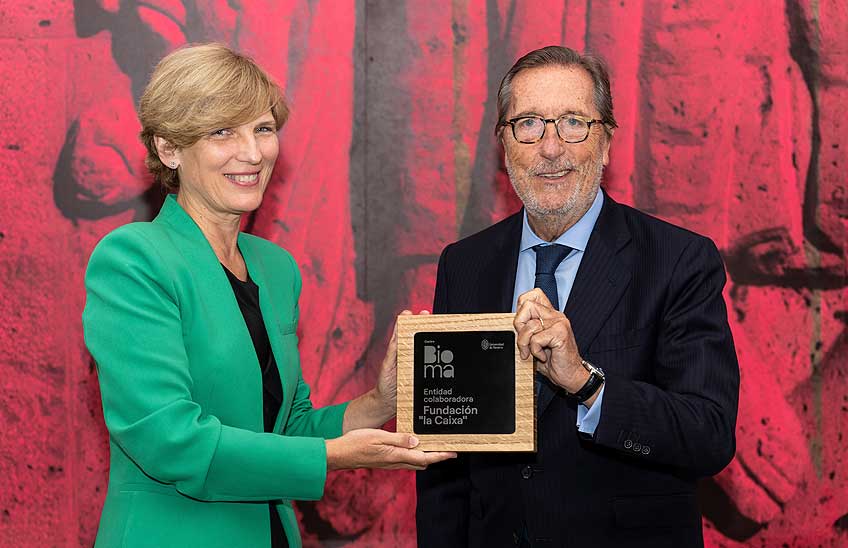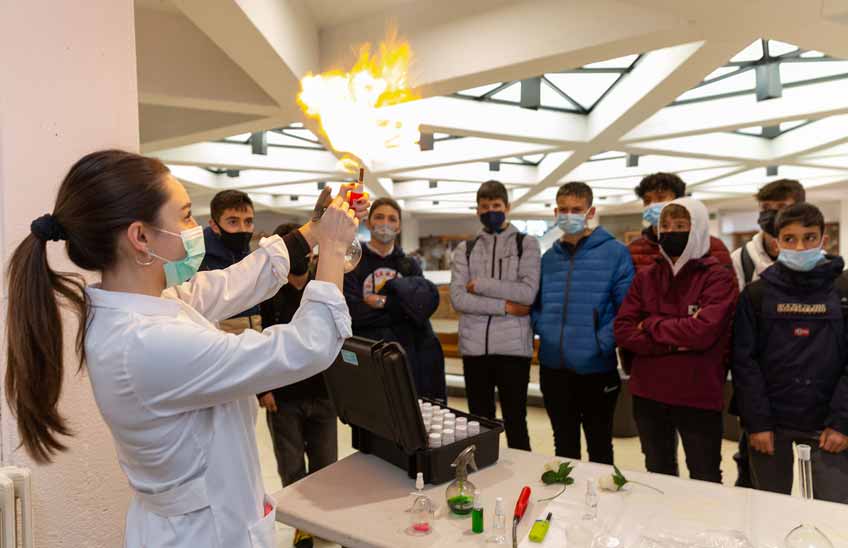"Changes in agricultural practices have caused variations in owl populations in Navarra over the last 25 years".
A research from the University indicates that there have been changes in the distribution patterns of this species.

19 | 10 | 2021
The barn owl is no longer in the same places in Navarra as it was 25 years ago. A study carried out at the School of Sciences of the University of Navarra indicates that changes in agricultural practices, such as the withdrawal of barns and corrals -the usual place where these species nest- and the use of industrial warehouses as model of current construction in the fields, are relevant aspects that are causing the gradual disappearance of this species in the Comunidad Foral.
 These are some of the conclusions drawn from research by Dr. Rubén Hernández Soto (Cárcar, 32 years old) and that have been reflected in his doctoral thesis titled "Barn Owl (Tyto alba): influence of captive breeding on its adult behavior and evaluation indirectly of its population evolution in Navarra.".
These are some of the conclusions drawn from research by Dr. Rubén Hernández Soto (Cárcar, 32 years old) and that have been reflected in his doctoral thesis titled "Barn Owl (Tyto alba): influence of captive breeding on its adult behavior and evaluation indirectly of its population evolution in Navarra.".
According to Hernández Soto, there is a consensus at academic community that links the change in land use, land consolidation, the use of pesticides, and the disappearance of the usual nesting sites with the decline of owl populations in recent decades, making it necessary to reintroduce these species - bred in captivity - into the natural environment.
The study carried out by this biologist has focused on mapping the location of the barn owl in Navarra by locating pellets - which are "a kind of oval-shaped "balls" composed of the caked remains of the hair and bones of their prey, which are separated from the meat in the digestive tract and regurgitated by the birds" - and comparing these data with others collected in a study carried out in the 1990s.
In addition, Hernandez has conducted interviews with farmers and hunters who reside in the areas where sampling has been conducted, to get their opinion on whether there are fewer owls than before. "Our research makes it clear that there has been a change in owl populations and that changes in agricultural practices have generated it."
Within the same research , Dr. Hernández has studied the behavior of more than 60 specimens of this species - owls bred in captivity with different Degree of contact with humans - to learn about the behavioral changes that these animals have in familiar or unfamiliar situations, as well as the way they learn to hunt. "Our results show that owls raised with higher contact with humans are less fearful of new environments and situations than owls with higher contact with their biological parents. The latter, on the other hand, show greater anti-predator behavior," he adds.
For Rubén this research should continue with the captive breeding of owls and their release into the environment, in order to know the capacity of adaptation that these species have. "It is necessary to carry out an experimentation internship in the field in order to observe if the results obtained in captive experiments correspond to the behavior and adaptation that the individuals show once they are in the wild and must survive in the natural environment".
The barn owl(Tyto alba) is a nocturnal bird of prey, predator of micromammals such as mice, voles or shrews, adapted to flying in open spaces and with a preference for nesting in barns or corrals. "The owl functions as an excellent biological controller of micromammal pests in agriculture, keeping rodent populations at low levels and greatly reducing the importance of periodic population peaks," he adds.
Rubén Hernández Soto is graduate in Biology by the School of Sciences of the University of Navarra and has made the doctorate in the department of Environmental Biology under the direction of professors David Galicia and Enrique Baquero.




